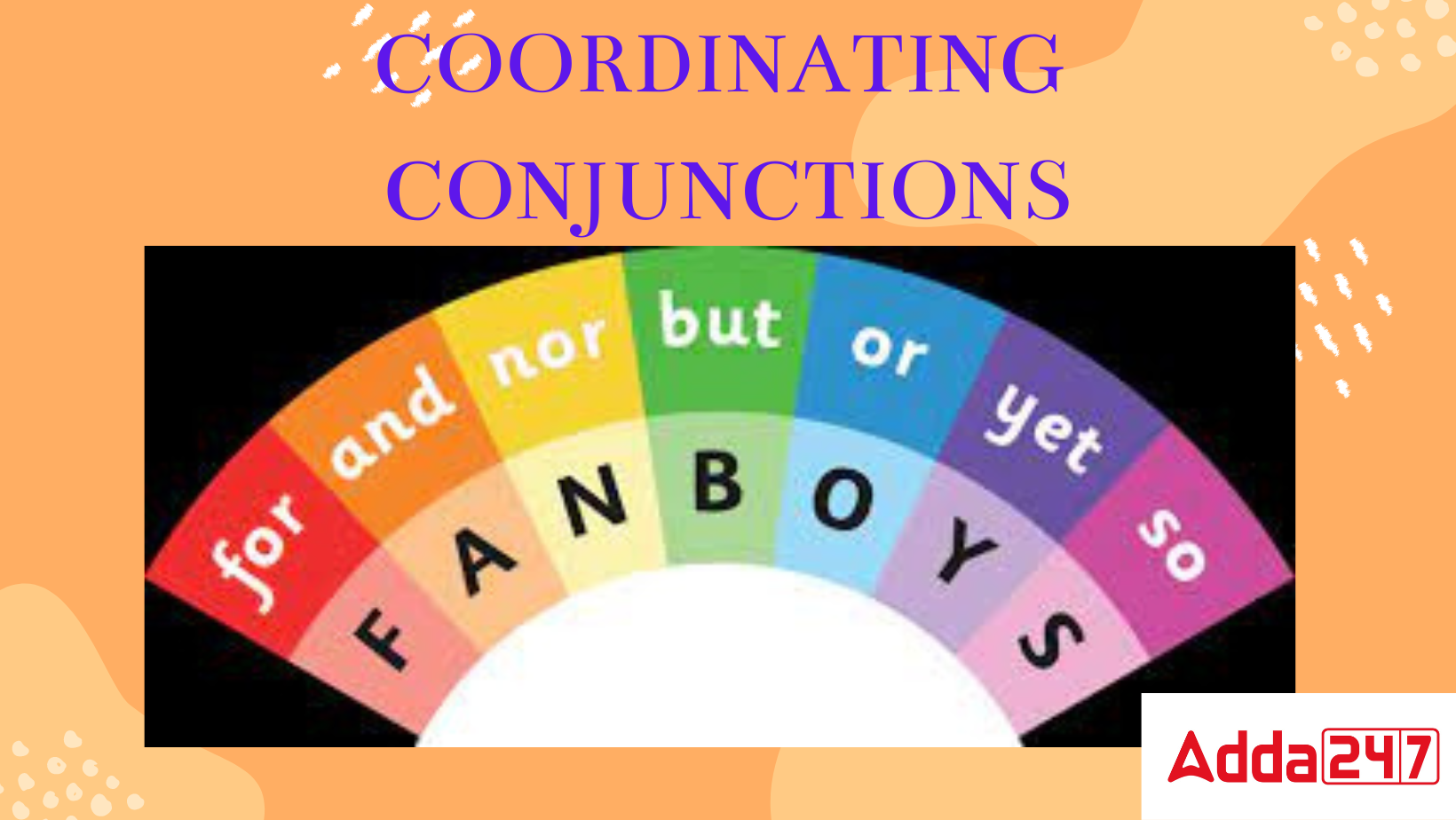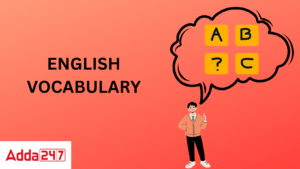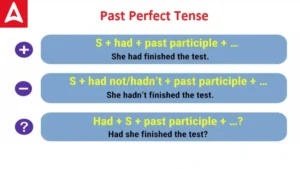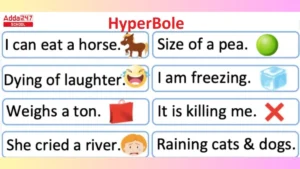Coordinating Conjunctions
A coordinating conjunction is a short term that is used to connect or combine two or more elements of a sentence that are equally significant from a grammatical and syntactic perspective. Now let’s examine the definitions of coordinating conjunctions in several dictionaries.
A conjunction serves as the binding agent between independent and dependent words, phrases, and sentences. A coordinating conjunction is a connecting word, phrase, or clause that is equal to or coordinate with another. Seven factors coordinate conjunctions include: for, and, nor, but, or, yet, and so. The acronym can be used to recall them. FANBOYS. The chart given below includes all the details of how these conjunctions use.
Coordinating Conjunctions List
| COORDINATING CONJUNCTIONS | PURPOSE |
| For | To show reason |
| And | To add information |
| Nor | To add negative information |
| But | To show contrast |
| Or | To give choice |
| Yet | To show concession |
| So | To show result |
Coordinating Conjunctions Definition
The definition of the coordinating conjunction is given below based on different dictionaries.
According to the Oxford Learner’s Dictionary, a coordinating conjunction is “a word such as or, and, or but that unites phrases or sentences of equal importance.”
A coordinating conjunction is a word like “and,” “or,” or “but” that unites two or more words, groups, or sentences of equal ranks, such as two major clauses, according to the Collins Dictionary.
A coordinating conjunction is defined as “a conjunction (such as and or) that links together words or word groups of similar grammatical rank” in the Merriam-Webster Dictionary.
Coordinating Conjunctions Rules
There are simply a few guidelines for appropriately using coordinating conjunctions in English Grammar because there are only seven of these words:
- It’s a good idea to use the short-term “FANBOYS” to memorize coordinating conjunctions so you’ll never forget them. They are:
- F = for
- A = and
- N = nor
- B = but
- O = or
- Y = yet
- S = so
2. Phrases, words, and clauses are always joined together by coordinating conjunctions. For example, She is good at singing and dancing.
3. Some teachers advise students that using a coordinating conjunction at the beginning of a phrase is improper. They do this mostly to help you avoid writing sentences in fragments rather than entire sentences, but sometimes it’s just a matter of preference. The truth is that these conjunctions can start sentences as long as you adhere to these three guidelines:
- Make sure a primary clause follows the coordinating conjunction right away.
- Don’t start every phrase with a coordinating conjunction. Only do this if it improves the effectiveness of your writing.
- Despite the fact that these conjunctions are frequently employed in places other than the start of sentences, commas shouldn’t be placed after them unless an interrupter comes right after.
Types of Coordinating Conjunctions
There are 4 types of coordinating conjunctions
- Cumulative Coordinating Conjunction: These coordinating conjunctions are employed to join two statements, phrases, or words.
- Alternative coordinating conjunction: Alternate coordinating conjunction is used to convey or connect different ideas or objects. It can also be used to present alternatives so that the reader has a choice.
- Adversative coordinating conjunctions: Contrasting concepts or opposing statements are indicated by the use of adversative coordinating conjunction.
- Illative coordinating conjunction: A conjunction of this type, known as an illative coordinate conjunction, is used to denote an observation or inference.
Coordinating Conjunctions Examples
Look at the following examples of coordinating conjunctions
- You should invite Shaoni and Shohini to your birthday party.
- I don’t like wasting time in sleeping, nor do I like gossiping with people.
- Amit is a promising player, but he is not playing the match.
- The student is more generative, so he will take admission in B.Tech.
- You will go with us, or stay in house.
- She reached home late, yet she looked very energetic.
- Do you like black olives or green olives?
- I am sure I locked the door, but I cannot remember if I took the keys.
- My friend and I had dinner at Patiala House, for it was the last day before she moved to Delhi.
- My cousin did not collect the clothes from the dry cleaner nor did he buy the things required for the birthday party.
Coordinating Conjunctions: Important points
There are some points to keep in mind while using coordinating conjunctions
- A comma should come before the second clause when coordinating conjunctions are used to join two separate clauses.
- A comma is not necessary when using coordinating conjunction to join two sentences in a sentence.
- You have the choice of using or not using a comma before the coordinating conjunction when it is used to join many nouns or a list of objects.
- Although it is commonly believed that sentences cannot begin with conjunctions, this is not true. If the situation calls for or permits it, you can begin the phrase with a conjunction.
Coordinating Conjunctions: Exercise
Check your understanding by doing these practice questions
- My favorite desserts include cookies, pastries ____ chocolates.
- I wanted to spend my entire summer vacation by reading books _____ I had to complete the homework.
- I finished my homework _____ my mom let me play.
- I want to eat at the new cafe _____ at a steakhouse.
- I have no money _____ I keep shopping.
- I have neither done the dishes _____ the laundry.
- We should bring either pizza _____ cake to the party.
Check your answers:
- My favorite desserts include cookies, pastries, and chocolates.
- I wanted to spend my entire summer vacation by reading books but I had to complete the homework.
- I finished my homework so my mom let me play.
- I want to eat at the new cafe or at a steakhouse.
- I have no money but I keep shopping.
- I have neither done the dishes nor the laundry.
- We should bring either pizza or cake to the party.
| Related Articles | |
| Verbs | Adverbs |
| Prepositions | Interjections |









 Vocabulary Words with Meaning and Senten...
Vocabulary Words with Meaning and Senten...
 Past Perfect Tense: Definition, Formula,...
Past Perfect Tense: Definition, Formula,...
 Hyperbole- Explanation, Definition, Exam...
Hyperbole- Explanation, Definition, Exam...














